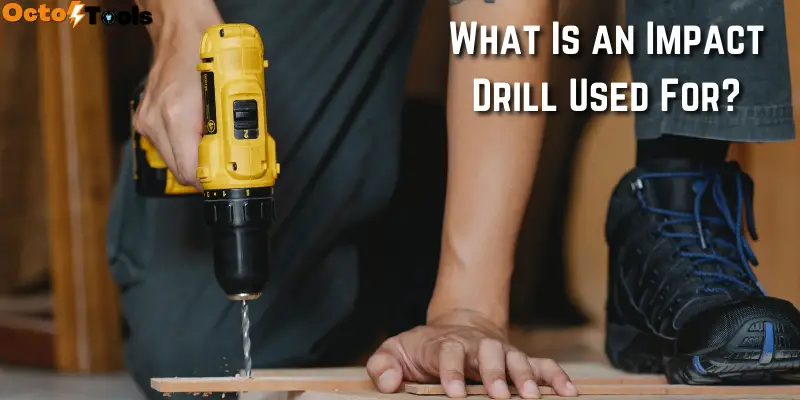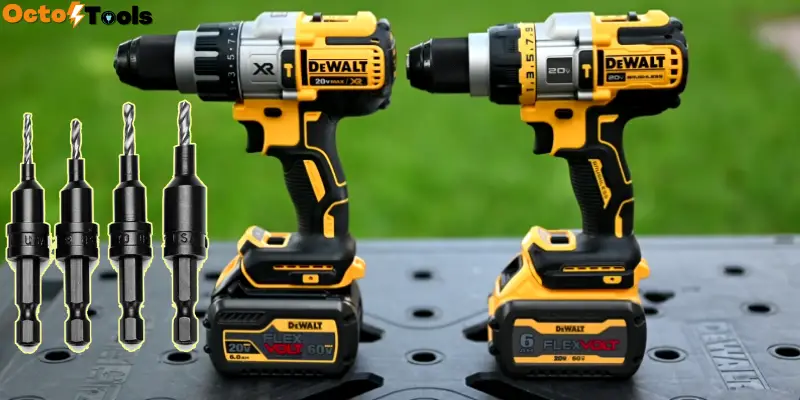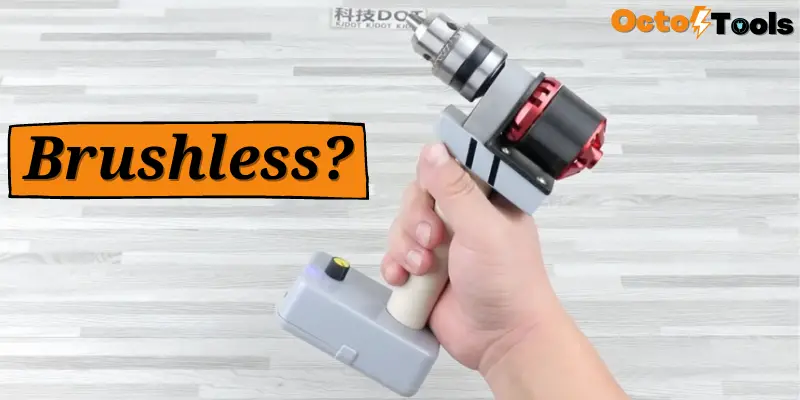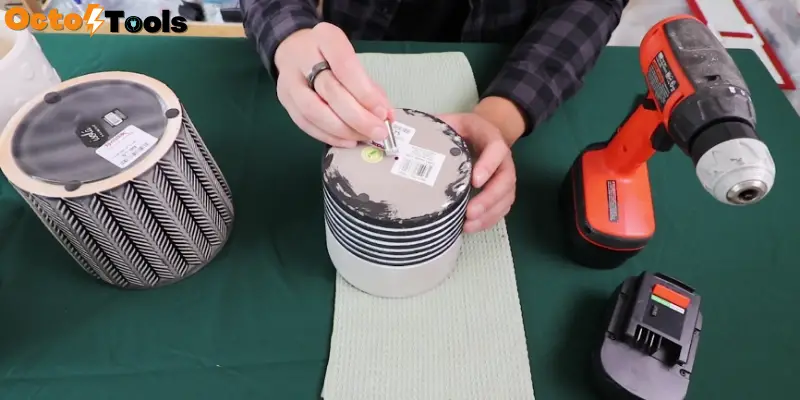Whether you just want to hang decorative items on your bedroom and living room walls or need to hang some bathroom or kitchen accessories on your respective areas, to secure the items you will need the right type and sized anchors.
But the question is how to determine the right drill bit size for the anchors?
Well, for that you need to have a basic idea of what size drill bit for anchor so you can securely finish your hanging task with no confusion or hassle. And to make your job less stressful, I will briefly explain the entire process in today’s article.
What Size Drill Bit For Anchor?
When you are wishing to hold any object or material on a wall you need to make sure that the hanging screw or bolt is securely connected with the hard surface and your element won’t fall or the surface will not crack.
And to do so, you will need to understand the differences in hole sizes and how to match that with particular anchors. Also, remember that the drilling size of your hole for the anchor will not only depend on the anchor size but also its type.
Therefore let’s see how you can easily make sure that your drill sizes and anchors sizes are perfectly complementing each other. There are mainly two types of anchors that we use commonly and I will be sharing both types of anchors size determining the way in below-
The Plastic Anchors:
Plastic wall anchors also known as expansion anchors and they reinforce your screws in the wall surface to ensure that screws will not be easily ripped off. You can use these anchors on concrete, brick, drywall, or wood surfaces and they are capable of securing lightweight pictures and small decorative objects that are under 30 lbs.
If you are working with conical plastic anchors then to get the right size hole just tap it with a hammer to get the size then drill to make the same sized hole.
Sometimes the diameter of the anchor sizes is given in the main packaging or boxes so you can easily determine from the mentioned size. Measure the shank of your drill bit against the front of your plastic anchor.
The diameter of the anchor size and the hole size should be similar and if the diameter is not similar then 1/16 inches extra can also be allowed making the opening for the bolt
The Heavy-Duty Wall Anchors:
Most metal anchors are capable of holding the weight of any heavy object but plastic anchors with expanding wings are also capable of holding certain heavyweights. For this type of anchor, the diameter of the drilling size should be determined by the diameter of the anchor sleeves.
To measure the size use a measuring ruler on it when the anchor wings are folded very closely to the sleeve and now use a bit matches with that diameter. Also, remember that some anchors are designed to screw directly, and to easily install those anchors you should drill a 1/4-inches pilot hole beforehand.
What Size Drill Bit For Drywall Anchor?
Now to do the drilling and installing task smoothly you will need to understand how to determine the accurate anchor type, size, and also hole size which I am going to explain in below so follow the instruction thoroughly-
Determining the Right Type of Drywall Anchor for your task:
First, you need to understand which type of anchors are needed for your hanging task, and to figure that out you also need to know the types and which one requires for which type of drilling task so let’s have a brief idea of each type-
- Molly wall anchor:
This one is also known as hollow wall anchors and is commonly used when you need an anchor for medium-duty applications. It is available in two types: pointed and non-pointed.
Well, the pointed tipping anchor will not require any kind of pilot drilling and you just tap it on the wall with help of a hammer but the dull tipped unpointed ones will require a pilot drilling beforehand. These anchors are perfect for hanging larger lightweight shelves and capable of holding 30 to 75 pounds in 1/2-inch drywall.
- Toggle bolt:
You must have heard of the Butterfly anchors which are also known as toggle bolts. These are the classic, and strongest type of drywall anchors. The metal sleeves of these bolts utilize two spring-loaded wings that open inside the wall.
If you want to hang a heavy object on your wall and there is no stud to tie into then toggle bolts can be your ideal choice because it is available in different holding capacity models and can hold 50 to 238 pounds max. They have a quick zip tie action that can be easily installed and removed.
To install them simply drill the recommended hole size mentioned in the bolts packaging then push the unit through. Now snap up the zip tie and you are set to hang your object. You can use it if you are hanging heavy larger shelves or TV brackets.
- Plastic Screw Anchor:
Plastic screw anchors are perfect for hanging lightweight objects like artworks, mirrors, smaller shelves, or wall clock. These are capable of holding 10 to 20 pounds max.
So, if you are hanging any light-duty element start by drilling the hole size marked in the package or if that is not mentioned just follow the measurement instruction given earlier. After drilling the accurately sized hole tap the anchor into that hole with a hammer and insert the screw.
Find The Desired Spot:
Figure out the desired spot where exactly you want to hang your item. In case your picture frame or hanging element has any wire-hanger in the back, make sure how many slacks are needed when you are figuring out a spot for hanging it.
Now make a pencil mark on that spot to figure out the center point of screw drilling. Instead of using a pencil or pen, you can also use a bit of grease or lipstick on the hooks of that item. In case your element has multiple hooks on its back, then you also need to measure the distance between them.
To measure that spot, use a level for your second anchor and just like before make a small pencil mark on the 2nd anchor’s spot. Now, place it on the determined spot then gently press it against your surface or wall for the correct marking.
Determining The Right Drill bit size For Anchoring The Element:
The drill bit you are going to use for the drilling should almost mirror the diameter of your anchor size, but you should also keep it a tad smaller. Because that slightest disparity will create a better hold when comparing with the larger holes.
Preparing The Screw & Anchor Then Secure Them:
Next, time for preparing your screw and anchor, and if you are using toggle bolts or molly anchors, then you will need to thread the screw before you start the installation so make sure you are doing that beforehand. Then install the respective anchors but if you are using plastic anchors you do not require any prep work so just tap it into the drywall.
One more thing, when you are using any hammer for the prep work remember to not swing the hammer too hard, or else your wall will get damaged.
Drill The Screws:
After that, you can finally drill the screws into the drywall. For drilling approach screws at a 90-degree angle so that you can make sure that screws are going straight line into the surface and also drill slowly to prevent stipping the unit.
What Size Drill Bit For 10mm Anchor Bolt?
For 10mm anchor bolts, you can use either an 8.9mm or a 9.1mm sized drill bit.
Final Thought
When you are well aware of what size drill bit for anchor bolts needed to secure ensure the connection of the screws into the hard surface then your task becomes easier and smoother. Hope this article will guide you the right way. If you have any further queries, do not hesitate to comment below.




